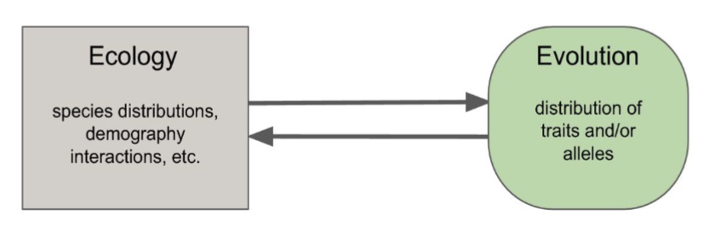biol 2200 final exam
1/13
There's no tags or description
Looks like no tags are added yet.
Name | Mastery | Learn | Test | Matching | Spaced |
|---|
No study sessions yet.
14 Terms
range
determines where organisms are found
where organisms are found are determined by their ability to persist or perish in different environments
factors that affect range:
abiotic: temperature, humidity, water/light availability
Basic properties of a habitat that will influence where an organism can/cannot live
biotic: food, habitat requirements, species interactions (e.g. competition, predation)
Organisms need food and space to sleep and/or have offspring
Interactions can be positive or negative (e.g. competition, predation)
Important for determining if an organism can live there
range expansion
new habitat becomes available but old habitat is still occupied
range shift
old habitat becomes unsuitable
ecology
study of organisms’ relationships with their environment
includes:
distribution and abundance
where they are found and how many there are
biotic and abiotic factors of the environment

what is the relationship between ecology and evolution?
ecology looks at how organisms interact w/ their environment
evolution (by natural selection) looks at how populations adapt to their environment over generations
ecology influences evolution by:
organisms that have traits better suited for their environment have higher fitness → drives selection to favor that trait → trait becomes more common
evolution influences ecology by:
new trait emerges in population → trait possibly changes interaction with the environment
difference between ecology and evolution
evolution occurs over multiple generations, ecology occurs within a generation
dispersal
movement of organisms to a new habitat
organisms may move to escape competition or find new resources
modes of dispersal (how organisms move to disperse)
animals: move actively
ex: butterflies can migrate across continents
plants: use passive mechanisms (e.g. wind, water, adherent fruits, fleshy fruits) to move seeds
wind / water: some seeds are aerodynamically designed to be moved across long distances through wind or water
adherent fruit: seeds have structures that stick to the fur or feathers of animals → allows for the seeds to be carried long distances before falling off on the ground
fleshy fruit: adaptive function to why fruit is delicious; animals will want to eat the fruit and move it around
seeds can pass through digestive systems and germinate where they are defecated
why is dispersal important?
it ensures species can survive if environmental conditions change
distribution patterns within populations
uniform distribution
random distribution
clumped distribution
uniform distribution
even spacing
driven by territoriality and competition
territoriality: organisms defend specific areas to secure exclusive access to resources (e.g. food, water, shelter, mates)
can space individuals evenly across the habitat if the resources are evenly distributed
this pattern minimizes overlap and competition
ex: hawks defend hunting territories; each hawk claims a specific area w/ certain amount of space → results in even spacing
competition for resources: closely spaced individuals compete for resources (e.g. sunlight, nutrients, water)
can be direct (ex: one plant casts a shadow over another plant)
can be indirect (ex: two plants compete by extracting nutrients or water from a shared area)
only plants that are adequately spaced w/ enough distance between them can coexist → leads to uniform distriution
random distribution
no clear pattern to how individuals are distributed
there are so many resources available, so they don’t need to compete
ex: dandelions will grow wherever the seeds land in a well-maintained lawn due to abundant resources
clumped distribution